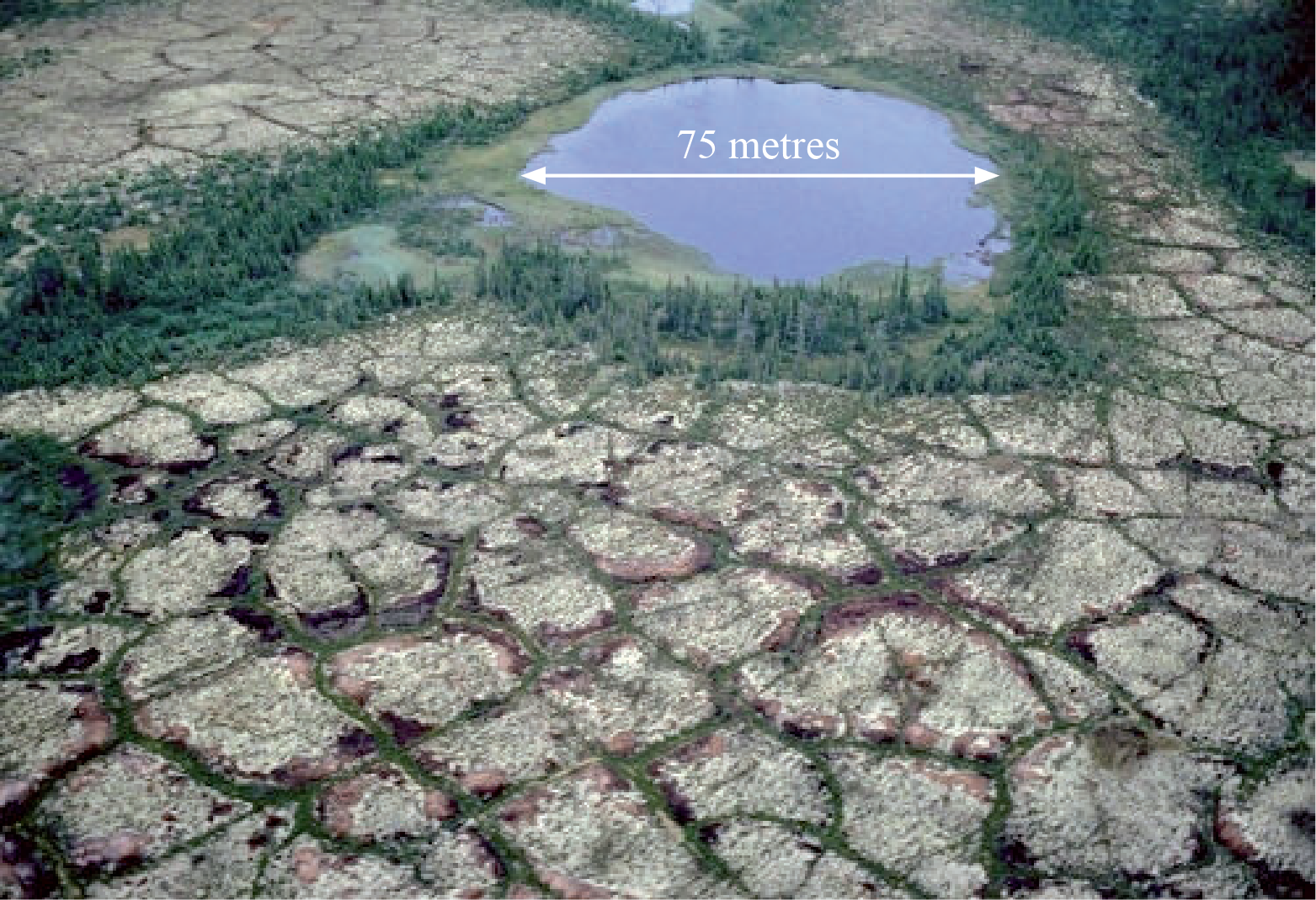| Date | May 2011 | Marks available | 3 | Reference code | 11M.2.bp.5 |
| Level | SL and HL | Paper | 2 | Time zone | |
| Command term | Explain | Question number | 5 | Adapted from | N/A |
Question
The photograph shows a periglacial environment.

[“Reproduced with the permission of Natural Resources Canada (Photo "10ag-7")."]
Name and describe two landforms shown on the photograph.
Explain the process of solifluction.
Explain the formation of pingos.
Examine the impacts of permafrost on human activities.
Markscheme
Patterned ground/ice wedge polygons/netting [1 mark] described as large irregular polygons with darker areas at edges [1 mark].
The pond/hollow/kettle hole lake/collapsed pingo [1 mark] with a further 1 mark for an accurate descriptive statement, for example, size, vegetated edges.
Credit other valid suggestions.
The movement downwards/on a slope/under gravity [1 mark] of thawed soil/material over frozen ground [1 mark].
Additional explanatory points include: liquid limit in the soil is exceeded causing flow, seasonal variability, speed of movement will depend on the slope angle, [1 mark].
A pingo, also called a hydrolaccolith, is a mound of earth-covered ice [1 mark]. The ice lens/ice core is formed by the accumulation of water [1 mark].
Award a third mark for any elaboration (for example, distinction between open/closed pingos, segregation/injection).
Human activities are fundamentally affected by the presence of permafrost. The ever-present threat of thawing and melting requires a range of adaptations in order to avoid harm to subsistence livelihoods, and damage to buildings, roads, and other infrastructure. Normal activities and techniques must often be modified at additional costs in construction and maintenance of railroads, buildings, water and sewer lines, oil and gas pipelines, dams, roads, bridges, and airfields, because of permafrost.
Future improvements in scientific and engineering approaches, plus careful geological site selection and further study of the permafrost problem, will allow successful expansion into polar areas.
Not all of the above points are required for an answer to reach band F, but good answers are expected to examine negative impacts and also consider that the challenges of permafrost on activities can be overcome.
To access bands E and F, candidates may offer some analysis of spatial or temporal variability in the level of impacts, for example, greater challenges in areas of discontinuous permafrost/areas with more active layer activity or climate change associated issues.
While examples are not a specific requirement of the question, those answers that provide supporting examples are likely to access the higher markbands.
Marks should be allocated according to the markbands.
Examiners report
Many candidates struggled with this question – many even omitted this part of question 5. Very few were able to suggest a name for the lake as a possible kettle lake or collapsed pingo.
Solifluction was either explained very well or very poorly – there was little in the middle.
The formation of pingos was not very well understood. Some were excellent but many were weak, merely describing the shape and size of pingos.
Surprisingly, this was not done very well. Many answers were very descriptive and lacking in support. It appeared that permafrost (and periglaciation in general) was not well understood.

